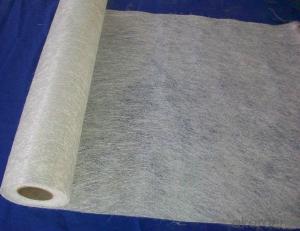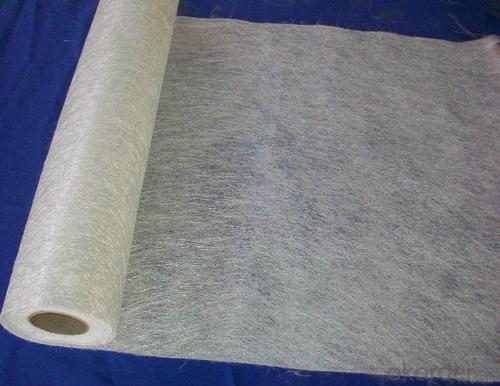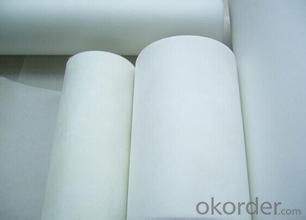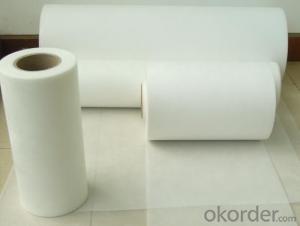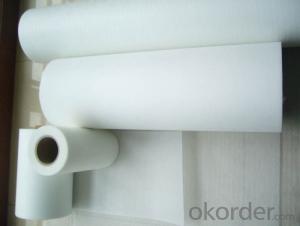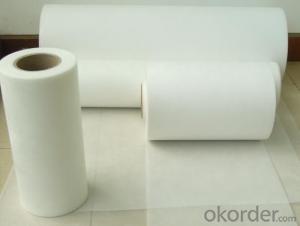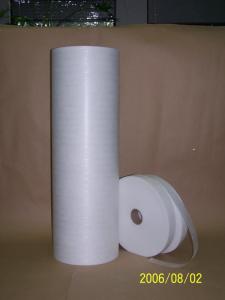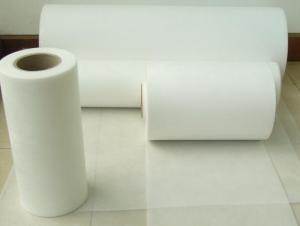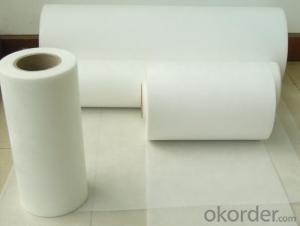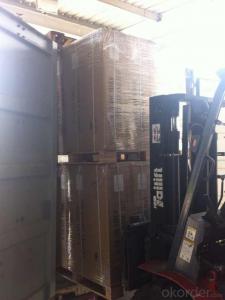Fiberglass Mat Tissue E-Glass Fiber Surface Tissue Mat for FRP Products
- Loading Port:
- Shanghai
- Payment Terms:
- TT OR LC
- Min Order Qty:
- 144000 m²
- Supply Capability:
- 1440000 m²/month
OKorder Service Pledge
OKorder Financial Service
You Might Also Like
1.Brief Introduction
E glass surfacing tissue is mainly used at the surface layers of FRP products.It can improve the product surface property on corrosion resistance, compressive strength, seepage resistance, and longer service life. It is also suitable for spraying; pattern pressing and other FRP pattern technology.
2.Product Features
Fast breakdown in styrene
Low binder content
Superior acid corrosion resistance
3.Technical Specification
Property | Area Weight | Moisture Content | Size Content | Breakage Strength | Width |
(%) | (%) | (%) | (N) | (mm) | |
Mathods | IS03374 | ISO3344 | ISO1887 | ISO3342 | |
S-SM20 | ±7.5 | ≤0.20 | 6-8 | ≥20 | 40-3000 |
S-SM30 | ≥30 | ||||
S-SM50 | ≥40 | ||||
S-HM20 | ≥20 | ||||
S-HM30 | ≥30 | ||||
S-HM50 | ≥40 |
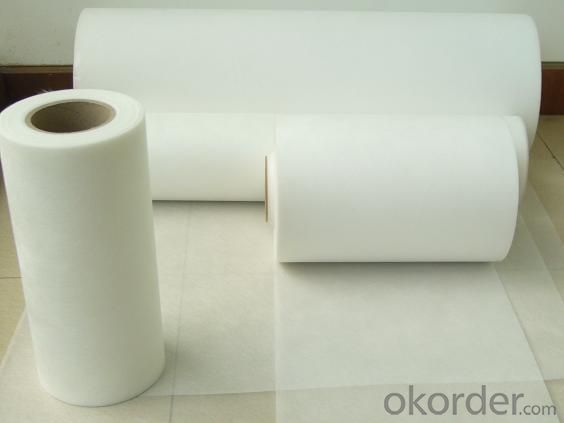
4.FAQ
Product Packaging:
Each Surface Tissue is wound onto a paper tube which has an inside diameter of 76mm and the mat roll has a diameter of 330mm. The mat roll is wrapped up with plastic film,then packed in a cardboard box or wrapped up with kraft paper.
Product Storage:
Unless otherwise specified, Chopped Strand Mat should be stored in a dry, cool and rain-proof area. It is recommended that the room temperature and humidity should be always maintained at 15℃~35℃ and 50%~75% respectively.
- Q: What is the impact resistance of fiberglass mat tissue at high temperatures?
- The impact resistance of fiberglass mat tissue at high temperatures can vary depending on several factors such as the specific composition of the tissue, the manufacturing process, and the conditions under which it is tested. Generally, fiberglass mat tissue exhibits good impact resistance at high temperatures due to the inherent strength and durability of fiberglass materials. Fiberglass is known for its excellent mechanical properties, including high tensile strength and stiffness, which contribute to its overall impact resistance. At high temperatures, fiberglass mat tissue is typically able to maintain its structural integrity and resist cracking or breaking under impact. This is because the fiberglass fibers are designed to withstand high temperatures and do not soften or deform easily. However, it is important to note that the impact resistance of fiberglass mat tissue can be influenced by other factors such as the presence of any additives or binders used in the manufacturing process. Some additives or binders may reduce the impact resistance or make the tissue more susceptible to damage at high temperatures. To determine the specific impact resistance of a particular fiberglass mat tissue at high temperatures, it is important to consult the manufacturer's specifications or conduct specific tests under controlled conditions. These tests can provide more accurate information on how the material will perform under impact at elevated temperatures.
- Q: Is fiberglass mat tissue suitable for automotive body panel repairs?
- Yes, fiberglass mat tissue is suitable for automotive body panel repairs. It is a commonly used material in the automotive industry due to its strength, durability, and ability to conform to different shapes. The fiberglass mat tissue provides reinforcement and helps to restore the structural integrity of the body panel, making it an effective choice for repairing damages.
- Q: Can fiberglass mat tissue be used for boat building?
- Certainly, fiberglass mat tissue is a viable option for boat construction. It is a versatile and lightweight material that is frequently utilized in the building of boats. Its composition consists of thin fiberglass strands woven together to form a mat-like structure. This material is renowned for its exceptional strength-to-weight ratio, making it an optimal selection for boat builders. The utilization of fiberglass mat tissue in boat construction primarily serves to fortify the structure and provide added durability. It can be applied to various parts of the boat, including the hull and deck, to enhance its resilience and safeguard it against impacts. Moreover, it can be employed to create a smooth and uniform surface, which is crucial for achieving a professional-grade finish. One of the notable advantages of employing fiberglass mat tissue in boat construction lies in its ease of application. It can be effortlessly tailored to the desired size and molded to fit the desired shape, allowing for flexibility and customization. Additionally, it can be easily layered with other materials, such as epoxy resin, to create a robust and dependable composite. Furthermore, fiberglass mat tissue exhibits exceptional resistance to water and corrosion, rendering it suitable for marine environments. It is also recognized for its superb thermal and electrical insulation properties, both of which are highly advantageous for boat builders. In summary, fiberglass mat tissue is indeed a suitable choice for boat construction. Its lightweight nature, impressive strength, and resistance to water and corrosion establish it as a dependable and popular option among boat builders.
- Q: Can fiberglass mat tissue be used for insulation boards?
- Insulation boards can indeed utilize fiberglass mat tissue as a viable option. This lightweight and flexible material consists of delicate glass fibers melded together with a resin. Its outstanding thermal insulation qualities make it an optimal selection for insulation boards. The mat tissue is effortlessly customizable, capable of conforming to various shapes and sizes, thereby facilitating insulation of walls, roofs, floors, and other areas within a structure. Notably, it possesses resistance against moisture, mold, and mildew, ensuring enduring insulation performance. Moreover, fiberglass mat tissue exhibits fire-resistant properties, further bolstering its suitability for insulation applications. In summary, fiberglass mat tissue proves to be an adaptable and efficient material for insulation boards.
- Q: What is the moisture vapor transmission rate of fiberglass mat tissue?
- The moisture vapor transmission rate of fiberglass mat tissue can vary depending on various factors such as the specific composition of the material and its thickness. However, in general, fiberglass mat tissue has a relatively low moisture vapor transmission rate. This means that it has a relatively low ability to allow moisture vapor to pass through it. This characteristic makes it a suitable material for applications where moisture resistance is desired, such as in insulation or construction materials. However, it is important to note that the moisture vapor transmission rate of fiberglass mat tissue can be further influenced by other factors such as the presence of coatings or laminations, which may enhance or restrict its moisture vapor transmission properties.
- Q: Is fiberglass mat tissue suitable for aerospace applications?
- Fiberglass mat tissue proves to be a suitable choice for aerospace applications. Its lightweight composition and remarkable durability render it an excellent option for critical aerospace uses where reducing weight and ensuring structural integrity are of utmost importance. Typically employed as a reinforcing material in composite structures and aerospace components like wings, fuselages, and engine parts, fiberglass mat tissue provides exceptional impact resistance, commendable thermal stability, and minimal moisture absorption. These vital characteristics enable it to withstand the challenging conditions and extreme temperatures encountered in aerospace environments. Moreover, fiberglass mat tissue exhibits commendable electrical insulation properties, making it well-suited for applications requiring effective electrical shielding. Overall, owing to its outstanding mechanical properties, lightweight essence, and ability to endure the demanding circumstances prevalent in aerospace applications, fiberglass mat tissue stands as a dependable and extensively utilized material within the aerospace industry.
- Q: Does fiberglass mat tissue provide any thermal insulation?
- Indeed, thermal insulation is provided by fiberglass mat tissue. The reason lies in the fact that fiberglass possesses a low heat conductivity, impeding the effortless transfer of heat. As a mat tissue, it successfully captures air within its fibers, thereby generating an insulation layer. This layer serves as a shield against heat transfer via conduction and diminishes the loss of thermal energy. Consequently, fiberglass mat tissue proves to be a viable remedy for achieving thermal insulation in numerous sectors, including construction, automotive, and aerospace industries.
- Q: What is the expected lifespan of fiberglass mat tissue in outdoor applications?
- The expected lifespan of fiberglass mat tissue in outdoor applications can vary depending on several factors such as exposure to weather conditions, maintenance, and quality of the material. However, on average, fiberglass mat tissue can last for approximately 20 to 30 years when properly installed and maintained.
- Q: How does fiberglass mat tissue perform in terms of moisture vapor transmission?
- Moisture vapor transmission is not a strong suit of fiberglass mat tissue. Its permeability to moisture vapor is extremely low, which effectively stops moisture from penetrating. This quality makes fiberglass mat tissue perfect for situations that demand strict moisture control and prevention, like in roofing and insulation materials. The limited moisture vapor transmission rate of fiberglass mat tissue aids in preserving the structure's integrity by averting moisture accumulation, condensation, and potential harm caused by mold or rot.
- Q: How does fiberglass mat tissue perform in terms of dimensional stability?
- Fiberglass mat tissue performs exceptionally well in terms of dimensional stability. Its unique composition of fine fibers and binders helps it maintain its shape and structure even under significant stress or changes in temperature and humidity. This makes it ideal for applications where dimensional stability is crucial, such as in the construction of composite materials, automotive parts, and insulation products.
Send your message to us
Fiberglass Mat Tissue E-Glass Fiber Surface Tissue Mat for FRP Products
- Loading Port:
- Shanghai
- Payment Terms:
- TT OR LC
- Min Order Qty:
- 144000 m²
- Supply Capability:
- 1440000 m²/month
OKorder Service Pledge
OKorder Financial Service
Similar products
Hot products
Hot Searches
Related keywords
